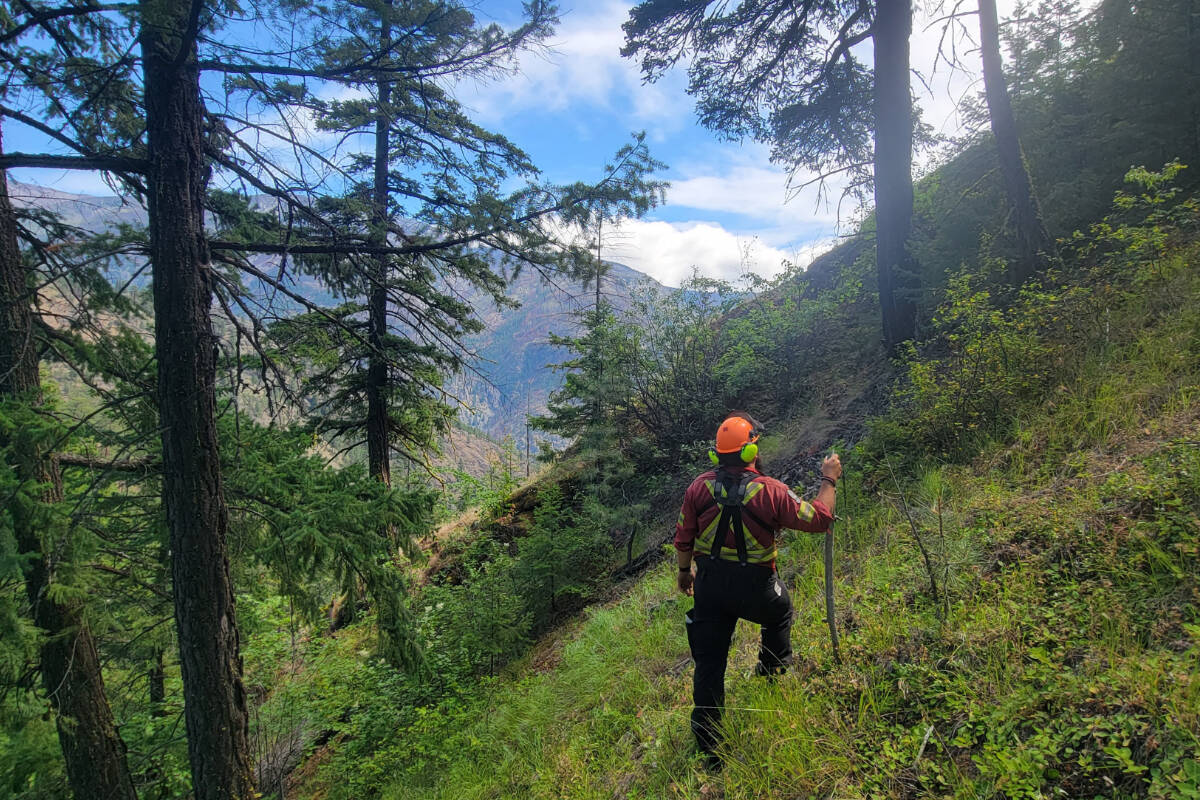BC Wildfire Service crews are taking advantage of a lull in fire activity to reinforce containment lines around the Nohomin Creek wildfire.
The fire remains at an estimated 2,058 hectares — growth that last occurred on July 17 when the fire’s western flank expanded upslope.
Warmer weather is coming. Daytime temperatures are expected to be in the low to mid-30s by early next week.
The BCWS warned that the hotter, dryer weather will cause fuels to dry out over the weekend and increase fire activity.
Crews have established containment lines on the south, east and northern flanks of the fire. BCWS says the containment lines have held up well against gusting afternoon winds.
A major focus for ground crews is protecting the Stein Valley Nlaka’pamux Heritage Park. So far, 1,500 feet of sprinklers and fire hose have been laid along the Stein Valley walking path. The sprinkler system was activated yesterday to add moisture to the valley bottom ahead of hot and dry afternoon conditions.
READ MORE: Crews move to protect heritage park as wildfire near Lytton grows to over 2,000 hectares
READ MORE: British Columbians told to prepare as temperatures set to ramp up this weekend
“Crews are now closely patrolling the spot for any remaining burning embers to ensure nothing pops up. The work along the Stein Valley walking path is complete for the time being,” the BCWS said in a statement.
Today, (July 21), crews will be working to construct a hand line between Stryen Creek and the Nohomin Creek ridge line that has already been scouted. One crew will be starting at the north end by Stryen Creek, and another crew will be starting from the south end by the Nohomin Creek ridge line.
Lytton First Nation fire crews will continue working around structures in the neighbourhoods on both the north and south sides of the Stein Valley.
Helicopters have had success in bucketing the fire throughout the day on both the north and south flanks. This has allowed ground crews to attack the fire directly and rappel crews are establishing helipads to facilitate access for crews and equipment.
“While fire activity across the majority of the fire is minimal, this work is proactive in the event of an increase in fire activity as a result of the warming and drying trend,” the BCWS said.
@SchislerCole
cole.schisler@bpdigital.ca
Like us on Facebook and follow us on Twitter.

